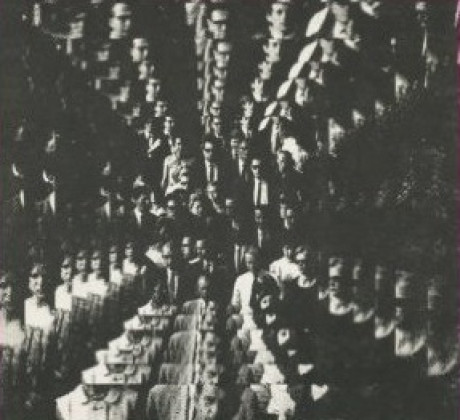Three Faces of Facilitation
It seems like the deeper design gets into processes of participation, engaging users and stakeholders, the more the designer becomes a facilitator or manager of operations. The designer starts acting like an organizer who coordinates collaborations, a diplomat who starts dialogues and negotiations, and a powerbroker who mediates between authorities and various rulers.
If we just scratch the surface of these processes of facilitation, so often part of any kind of “social” design or innovation, we must ask: what processes of control and decision-making do designers really facilitate? Even if designers may try to make their facilitation neutral, hearing many stakeholders, it would be wise to ask: Whose errands does the designer run?
On a very basic level, the design perspective on facilitation seems to be a bit more positive in its outlook than most political theory. Designers have a tendency to focus on the power to do something new rather than the power over others. Design looks for the orchestration of new actions; they focus on win-win relationships rather than domination and zero-sum games. But the affirmative gesture of design does not make power disappear from the work of facilitation.
To better see what control the facilitation of design processes wields, the perspective of political theorist Steven Lukes can be useful. Lukes divides power into three aspects or dimensions, or what he calls “faces.” The first dimension is open and visible, and highlights who gets his or her will through at the end by means of capacity or ability. It can be through negotiation or confrontation, but the one who wins has this form of direct power. The second dimension is a hidden and indirect form of power that sets the agenda and frames the questions, and also, makes things not happen by simply not being an alternative. The third dimension is invisible to most of us, as it concerns how those in power secure the tacit compliance of others, making them, willingly or unwillingly, see that it is in their own interest to be led or even oppresses. This final dimension operates on a stealthy level, as it makes people feel empowered even though they are stripped from political agency as they act against their own basic interests.
As designers facilitate social and participatory processes they are asked to invite many stakeholders and sometimes even take disagreements and contrary agendas into account. The participants engage and negotiate on the first dimension of power. However, even if designers often take pride in “questioning the brief,” the second level of power is often neglected: Who sets their agenda and who defines what is a “problem”? Or if we are to turn a problem into an opportunity, how does this opportunity fit into the larger agendas and social mechanics? Or to put it differently, why are the designers there in the first place? The third dimension acts under the surface of design and the profession itself, hiding in our ideologies. Here, design makes power “user-friendly” and invisible, often masking the agenda in liberal terms and using design as legitimizing arena for the entry of other forms of power, such as market rationale, which translating agency into quantifiable data or monetizing social domains.
Let’s take an everyday “social” design example: facilitating an urban gardening project in a poor neighborhood. On the first level, the designers talk to inhabitants and negotiate with the landlord or municipality, and after long hours and post-it sessions come up with a project. What often seems to happen is that the designers missed to find “checks and balances” on the second level, failing to address how the gains on a social level (for the inhabitants) also translate into gains on a level of control, governance or ownership (all of which is usually taken by the landlord or municipality). On the third level, the process has done nothing to change the power dynamics in the neighborhood, even if the inhabitants now may grow things and eat healthy. Nothing has challenged the status quo. The weak have no new leverage. The designers have facilitated a process where the equilibrium has become user-friendly and perhaps even more easily controllable.
Be careful next time you get to facilitate some social process in design, so you don’t undermine the agency of the ones you think you support.
Related Content:
-
Social Design for Beginners
Curated by Angeli Sachs, Social Design exhibition in the Museum for Gestaltung Zurich aims to discuss implications of growth economy on human beings, environment and design. Banu Çiçek Tülü reviewed the exhibition as a good example of inclusiveness in a country where democratic design processes emerge in urban scale.
-
Learning From Change
In conversation with Jan Boelen, the curator of 4th Istanbul Design Biennial on the theme of "A School of Schools." We discussed a variety of issues starting from the making of a design biennial up to design's capacity to respond to changes in the society.
-
New Forms of Conviviality
Hulya Ertas talked with Cristina Gamboa, one of the founder members of Lacol, on their approach as an architecture cooperative
-
Design in the Chain of Being
The notion of the Anthropocene acknowledges the impact of human civilization and capitalism on the planet
-
Seeds of Awareness
In the guidance of Michael Leung, this interview looks into a collective movement that flourishes at a street stall in Hong Kong as a reaction to the current development plans
-

A Play Experience
-
Beyond Design Lilliputianism
Throughout the 20th century design in many ways ruled as a royal practice of modernity.
-
Glocal Camp 2017: Means and Ends
Civicwise, an international network working on civic design gathered together at Glocal Camp to discuss the community governance, collaborative economy, and inclusive communication
 23.06.2016
23.06.2016









